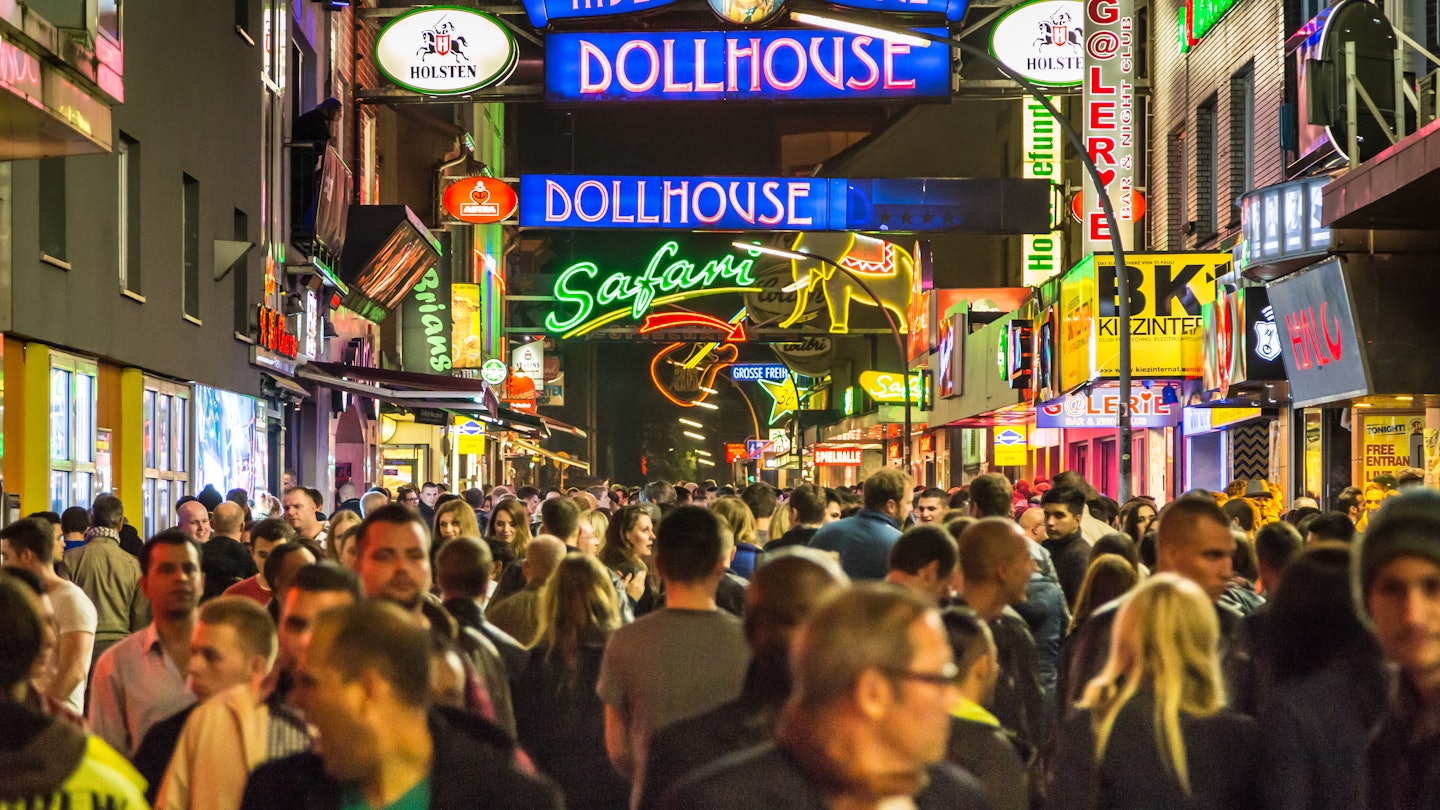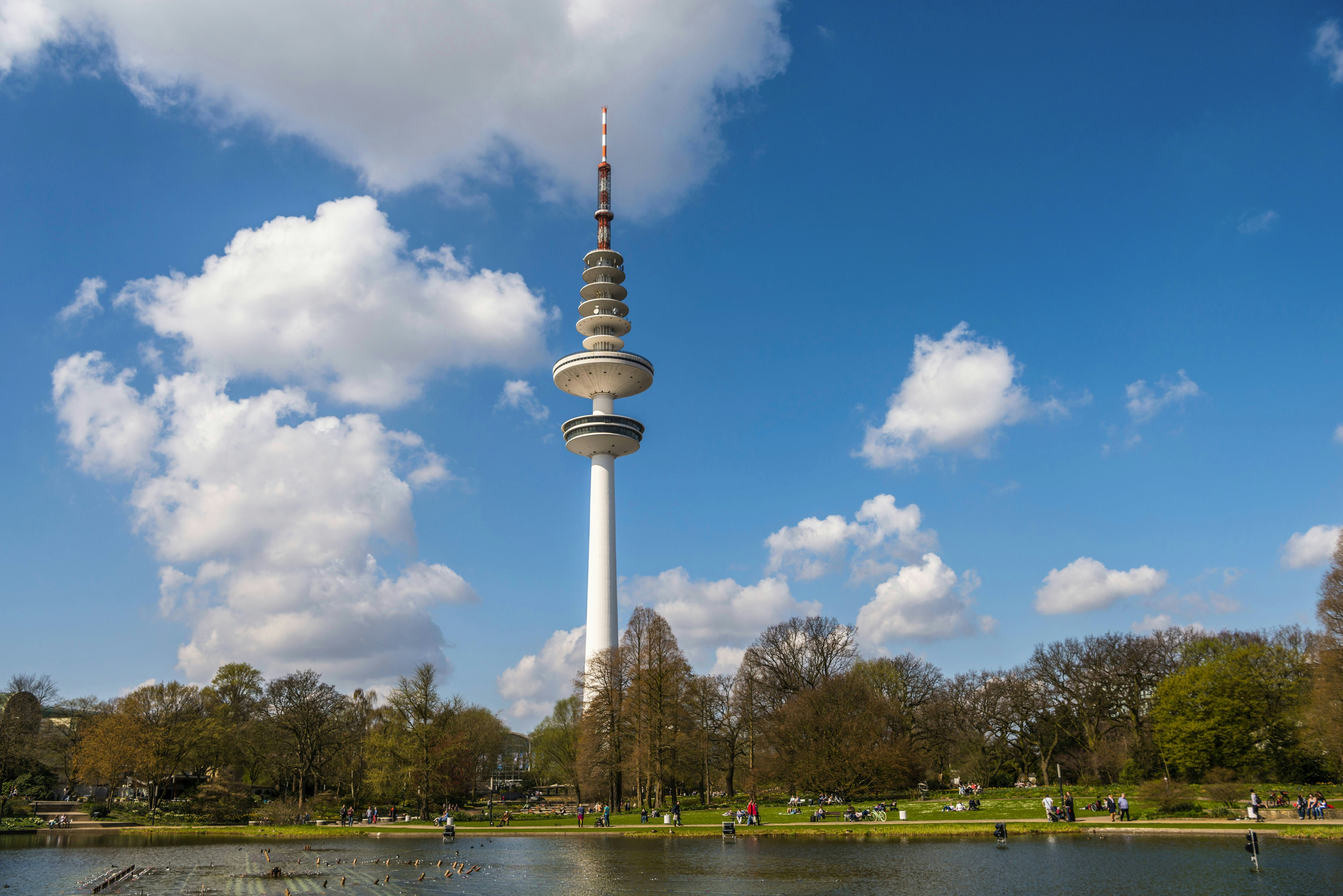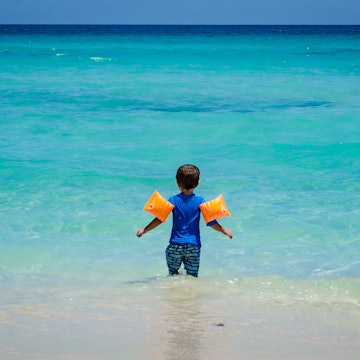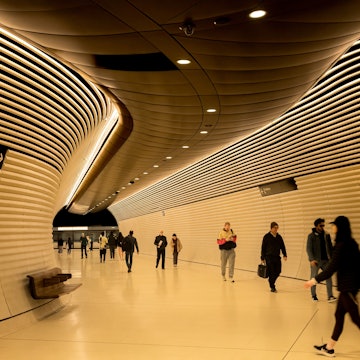

Reeperbahn in St Pauli district. Manuel Bischof / Getty Image
You probably don’t need to be told that Hamburg has no shortage of cultural, architectural and artistic attractions, but once you’ve checked off the marquee spots, it’s time to go local and find out what makes the city – and its people – truly tick. With a little guidance from us, plunge in and find those great experiences that in-the-know Hamburgers would rather keep to themselves.

Eat like a local
As befits Hamburg’s cosmopolitan nature, the city’s food spectrum spans a United Nations of tastes and flavours. But while locals happily devour ceviche, ramen, poké bowls and other trendy eats, they’re also fierce fans of native dishes that have stood the test of time. The classic Hamburg quick-food fix is the Fischbrötchen (fish sandwich) – a white bread roll stuffed with pickled or brined herring, onion slivers and remoulade sauce. You’ll find them everywhere, but Brücke 10 down by the port has some of the best in town. Meanwhile, the cure for sugar cravings is the Franzbrötchen, a cinnamon-and sugar-laced croissant-type roll that’s reportedly a left-over from the Napoleonic occupation (1806 to 1814). Home-grown mini-chain Franz & Friends, with several branches around town including a handy one in the main train station, has an especially mouthwatering selection. Carnivores, meanwhile, salivate over Currywurst, a pork sausage drenched in tangy tomato sauce and drizzled with curry powder. Ignore the endless debate about whether this earthy snack was invented in Hamburg or Berlin when sinking your teeth into these plump wieners, for instance at cult purveyor Imbiss bei Schorsch.

Chill like a local
Well, yes, Hamburg is a city shaped by water, but it boasts a great amount of green space, too. In fact, an entire half-moon-shaped belt of parkland cradles the former western city ramparts from the Inner Alster Lake to the Elbe River. The largest and prettiest of the bunch is Planten un Blomen (Low German dialect for ‘plants and flowers’), where locals go for sniffs of romance in the rose garden, a tea ceremony in the Japanese garden, or a picnic within spraying distance of the Wasserspiele, a fountain that erupts into a colourful light-and-music choreography nightly between May to September. Beach bars are also popular chill zones. While StrandPauli in St Pauli and Strandperle in Ovelgönne are both well-known waterfront lairs, locals have kept Entenwerder 1 largely to themselves. This charismatic café on a floating pontoon enjoys a dreamy location right by a riverside park in Rothenburgsort, just east of the HafenCity, Hamburg’s prestigious urban renewal quarter. It’s a lovely spot from breakfast to nightcaps but perhaps is at its most idyllic during sunset. Get there by bus or, better yet, by bicycle via the new 3km-long waterfront bike path from Deichtorhallen.
Party like a local
Ground central for serious partying is, of course, St Pauli (known as the ‘Kiez’), which is so much more than a red-light district. Sure, it’s impossible to ignore the screaming neon signs promising ‘Paradise Sex’ and ‘24h Girls’ along the Reeperbahn and Grosse Freiheit, but tucked in between are plenty of locally adored venues catering to more lofty tastes. Case in point: cocktails with a breathtaking view of the strip and the harbor at the Skyline Bar 20up, found on the 20th floor of the Empire Riverside Hotel. Another fine destination is Chug Club, which wears the crown of Germany’s Bar of the Year 2018 for its supreme tequila-based libations served in small sizes (chugs). Hamburg’s music legacy is kept alive at countless small clubs like Mojo, Golden Pudel Club and Molotow and is also celebrated at the annual Reeperbahn Festival (next date: 19 to 22 September 2018). You can even walk in the steps of the Beatles at the Kaiserkeller and the Indra Club, even though both have changed beyond recognition since the Fab Four jammed here between 1960 and 1962.
Shop like a local
Hamburg is a fabulous place to shop, and we’re not just talking malls and chains. The main commercial retail strip, Mönckebergstrasse, connects the main train station with the Rathaus (town hall), while fancy brands dominate Grosse Bleichen and Neuer Wall. If your tastes run more to the idiosyncratic, leave the high streets and follow the locals into such neighbourhoods as Karolinenviertel, Sternschanze, Ottensen and St Pauli. Prowl quaint side streets lined with indie boutiques showcasing up-and-coming designers, sustainable fashion, artisanal concepts and vintage clothing. On Saturdays, hipsters ride the retro wave at the Flohschanze flea market, a prime hunting ground for preloved treasure, which takes over the cobbled alleyways around a former slaughterhouse. When it comes to edibles, farmer’s markets are the preferred source for everything from fresh produce and exotic spices to olive oil and bread. One of the most scenic is the Isemarkt, which sets up along Isestrasse from 8.30am to 2pm every Tuesday and Friday. The prize for most original market, though, goes to the St Pauli Nachtmarkt (Wednesdays 4pm to 10pm) which has become a happening after-work gathering spot, complete with food trucks and live music.
Cheer like a local
Many Hamburgers live and die by the fortune of the city’s football teams, Hamburger SV and FC St Pauli. But it’s the latter club that enjoys an especially passionate and loyal fan base. Ironically, the enthusiasm is not fuelled by the players’ acumen on the field (the team plays in Germany’s second division) but by the club’s rebel ethos, underdog roots and proud tradition of standing firmly against racism, sexism and homophobia. In the bleachers, a permanent banner reads: ‘Kein Fussball den Faschisten’ (No Football for Fascists). Even CNN called it ‘soccer’s coolest club’. On game days, some 24,000 supporters, many wearing a T-Shirt or cap emblazoned with the club’s iconic skull and crossbones logo, cram into the Millerntor-Stadion, not far from the Reeperbahn red-light district. Join cops, cabbies and CEOs to enjoy this unique atmosphere, then make the pilgrimage to the venerable Jolly Roger pub for post-game partying. Even if no match is on, you can see this hallowed ground on a guided behind-the-scenes tour that explores the locker rooms, the offices and the ballroom.
















